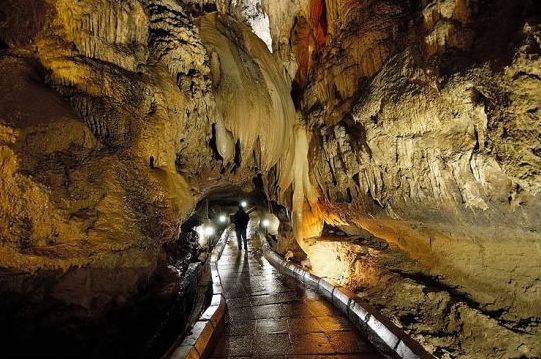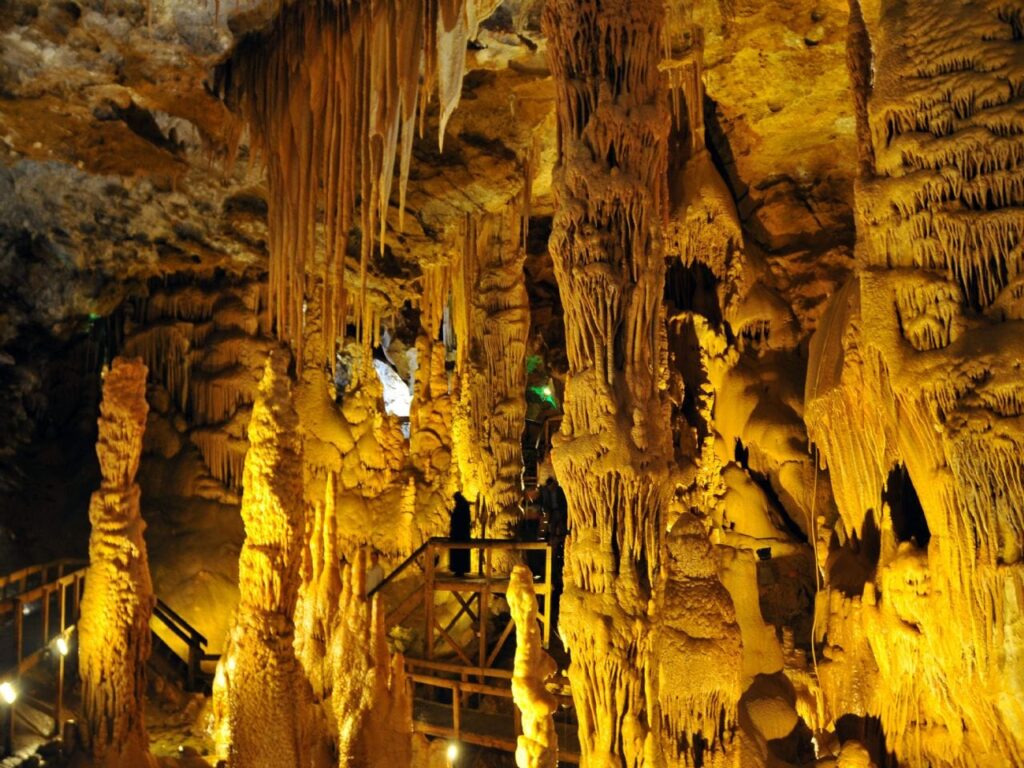Natural cavities where cold and heat do not work:
Caves
Whether the weather conditions are rainy or cold, we go to places where you will never feel cold or be affected, to Dim cave in Alanya, the beautiful district of Antalya.
Dim Cave
Dim Cave is a natural cave formed along crevices and cracks caused by rainwater in Limestone rocks. The underground waters that shaped the cave in the last geological time period have gone deeper, that is, to the level of Dim stream. Accordingly, the expansion of the cave volume stopped, but it was observed that the dripstone formation continued in places. Rainwater absorbed some of the carbon dioxide in the air and soil cover and formed carbonic acid. As the carbonic acid waters seeped through the crevices and crevices of the rocks, it dissolved the limestone. When these calcareous waters entered the cave, some of the carbon dioxide went back into the air as the pressure was reduced and the lime solution was deposited. As this process continued for thousands of years, stalagmites were formed from the ceiling of the cave. Stalagmites formed columns by growing over time and sometimes merging.
Although research on the formation age of the Dim cave made, such as the age of the other karst caves in Turkey, is estimated to be about 1 million years ago. Dim cave is 360 m long and 10-15 m wide. It is located 232 meters above sea level. Contents Europe’s wealth and ponds No. stalactite formations, whereas Turkey has the distinction of being the second largest cave. The Dim cave, known by the local people since ancient times and used as a shelter-shelter, was researched by speleologists in 1986. Dim cave is also important in terms of being the first cave opened by a private entrepreneur in our country. Mag. Kind. A.S. he rented the cave from the General Directorate of Forestry in 1997, with the approval of the ministry, in order to bring it into tourism. Dim cave was declared a natural protected area in 1990 and was opened to visitors in September 1998. Dim Cave, which is open every day between 09.00-17.00 and has a fee, is 18 degrees in summer and winter.
The first to enter the cave, draw his plans and make his measurements, Dr. Nuri Gürdal states that while building the walking platforms, they take extraordinary care to prevent the cave formations from being damaged by the spotlights. While the walking track, metal railings and excursion areas are determined, the lighting has been kept in moderation because it can increase the temperature and cause moss and darkening. Stalactites are protected with wire fences, and the cave, which requires a stand and high asa film for free photography, has a generator that switches on in 5 seconds in case of a power failure. Brochures and postcards are sold at the box office.
Dim cave sightseeing route
Caves are generally gloomy, with low ceilings with high humidity, but you do not encounter an atmosphere that constricts you in Dim cave. When you climb the ladder to the cave mouth and enter the path, the road splits into two inside. You see the 50-meter gallery, turn back and visit the long section. At the end of the gallery, which has a 300-meter walking area with a green lake, amazing formations fascinate and fascinate visitors. You can walk around with a shirt at 18 degrees, you do not get cold. The cave, which is an ideal place for video shooting, is one of the caves that should be seen with stalactites, stalagmites, curtain and macaroni formations, cave roses and travertines in Pamukkale hall.
Where is Alanya

